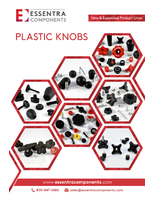NIST releases nanoruler with femtometer accuracy.
Share:
Press Release Summary:
NIST has issued a ruler which is calibration standard for x-ray diffraction that measures angles with accuracy better than 1/3,600°. Unit is 25 mm² multilayer silicon chip that provides crystallographers with crystal sample for calibrating precision instruments. Spacing, tilt, and orientation crystal lattice values are traceable to SI units, so material provides absolute reference for high-precision calibrations.
Original Press Release:
New NIST Nano-Ruler Sets Some Very Small Marks
The National Institute of Standards and Technology (NIST) has issued a new ruler, and even for an organization that routinely deals in superlatives, it sets some records. Designed to be the most accurate commercially available "meter stick" for the nano world, the new measuring tool-a calibration standard for X-ray diffraction-boasts uncertainties below a femtometer. That's 0.000 000 000 000 001 meter, or roughly the size of a neutron.
The new ruler is in the form of a thin, multilayer silicon chip 25 millimeters square (just under an inch). Each one is individually measured and certified by NIST for the spacing and angles of the crystal planes of silicon atoms in the base crystal.
X-ray diffraction works by sending X-rays through a crystal-which could be anything from a wafer used to make microchips to a crystallized sample of an unknown protein-and observing the patterns made by the X-rays as they diffract from electrons in the crystal. The spacing, angles and intensity of the pattern's lines tell a trained crystallographer the relative positions of the atoms in the crystal, as well as something about the quality of the crystal, the nature of the chemical bonds and more. It is one of the workhorse techniques of materials science and engineering. The precision version, high-resolution X-ray diffraction, can be used to determine the thickness, crystal structure, embedded strain and orientation of thin films used in advanced semiconductor devices and nanotechnologies.
Formally NIST Standard Reference Material (SRM) 2000, "Calibration Standard for High-Resolution X-Ray Diffraction," the new ruler gives crystallographers an extremely well-known crystal sample for calibrating their precision instruments. It was made possible by the development of a unique parallel beam diffractometer at NIST that makes measurements traceable to international measurement standards and is believed to be the most accurate angle measuring device of its kind in the world. The NIST instrument can measure angles with an accuracy better than an arc second, 1/3600 of a degree. "Our accuracy is at about the angle made by the diameter of a quarter-if you're looking at it from two miles away," explains NIST materials scientist Donald Windover, "The precision is better, about the size of Washington's nose."
Because the crystal lattice values for SRM 2000-spacing, tilt, orientation-are traceable to SI units, the new material provides an absolute reference for high-precision calibrations. Details are available at https://s.nist.gov/srmors/view_detail.cfm?srm=2000.
Standard Reference Materials are among the most widely distributed and used products from NIST. The agency prepares, analyzes and distributes more than a thousand different materials that are used throughout the world to check the accuracy of instruments and test procedures used in manufacturing, clinical chemistry, environmental monitoring, electronics, criminal forensics and dozens of other fields. For more information, see NIST's SRM Web page at http://ts.nist.gov/measurementservices/referencematerials.
Media Contact: Michael Baum, michael.baum@nist.gov, (301) 975-2763




